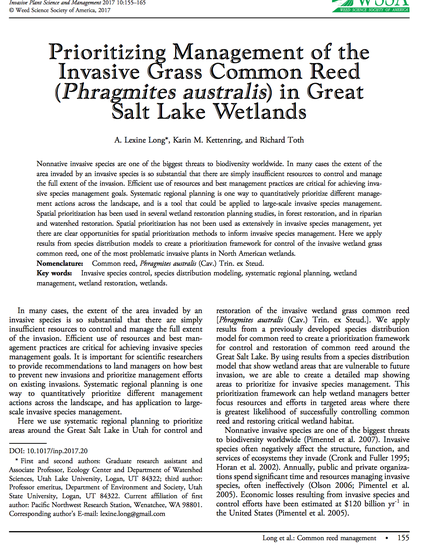
Article
Prioritizing Management of the Invasive Grass Common Reed (Phragmites australis) in Great Salt Lake Wetlands
Invasive Plant Science and Management
(2017)
Abstract
Nonnative invasive species are one of the biggest threats to biodiversity worldwide. In many cases the extent of the area invaded by an invasive species is so substantial that there are simply insufficient resources to control and manage the full extent of the invasion. Efficient use of resources and best management practices are critical for achieving invasive species management goals. Systematic regional planning is one way to quantitatively prioritize different management actions across the landscape, and is a tool that could be applied to large-scale invasive species management. Spatial prioritization has been used in several wetland restoration planning studies, in forest restoration, and in riparian and watershed restoration. Spatial prioritization has not been used as extensively in invasive species management, yet there are clear opportunities for spatial prioritization methods to inform invasive species management. Here we apply results from species distribution models to create a prioritization framework for control of the invasive wetland grass common reed, one of the most problematic invasive plants in North American wetlands.
Disciplines
Publication Date
2017
DOI
http://www.bioone.org/doi/full/10.1017/inp.2017.20
Citation Information
Long, AL; Kettenring, KM; Toth, R. 2017. Prioritizing Management of the Invasive Grass Common Reed (Phragmites australis) in Great Salt Lake Wetlands. Invasive Plant Science and Management 10(2):155-165. http://www.bioone.org/doi/full/10.1017/inp.2017.20
